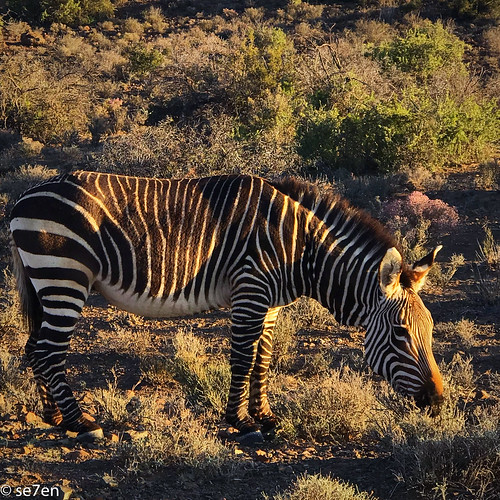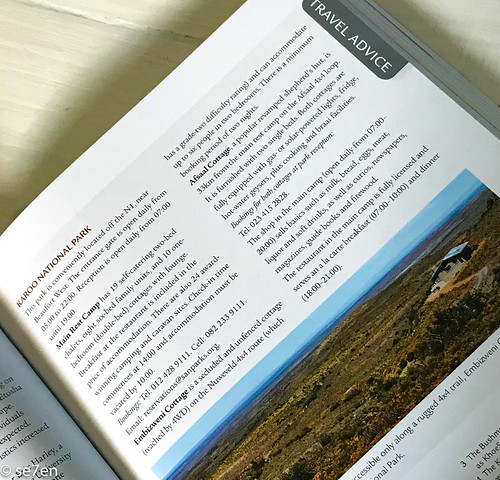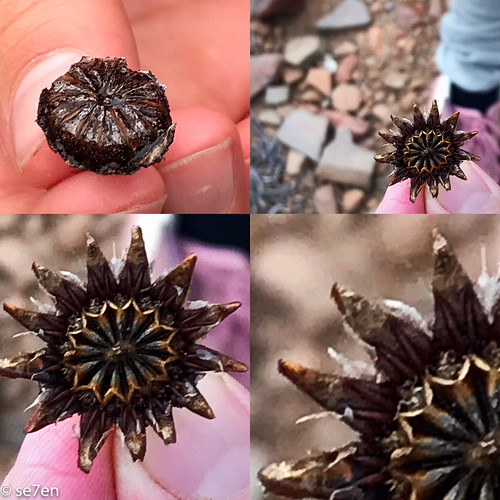Our previous post was a photo tour of our recent trip to the Karoo, a place of unprecedented beauty and wide open spaces. If you need to get “Under and African Sky” and be miles away from anyone, anywhere… then this is the place to go. Earlier this year a book called, Wild Karoo, by Mitch Reardon, landed on my review pile… and I was so excited… because how often do you get to review a book about a place that you are actually going to be visiting.

We cracked open this book and began reading it immediately. This book is not a field guide so much as a story… the tale of our wild wild Karoo. It is very readable and tells the tale of the author’s personal journey of discovery, as he explored the extent of the Karoo.

The most striking thing, within the first few pages of the book, is that you will realise that the Karoo is a vast wild space, not just a strip of dirt on either side of the highway between Cape Town and Johannesburg. The Karoo extends over the greater part of Southern Africa. And our visit to the Karoo National Park was really only a fraction of the Karoo as we define it.

Chapter by Chapter
The book is divided into chapters, region by region… including the West Coast and the Cederberg as the Western edge of the region and the forests of Grootvadersbos in the south. There is a chapter for each of the National Parks represented in the Karoo and each of these chapters includes a box with all the pertinent travel information: contact numbers, websites, accommodation available and so on. More than that there are chapters on the plight of specific animals that are endemic to the Karoo:
- Chapter 1: Southern Beginnings
- Chapter 2: The Langeberg and the Little Karoo
- Chapter 3: Karoo National Park
- Chapter 4: The Plight of the Springbok
- Chapter 5: From Tankwa Karoo to the Cederberg
- Chapter 6: Namaqualand
- Chapter 7: The Great River
- Chapter 8: In Search of Elusive Beasts
- Chapter 9: The Mountains and Plains of Cambedoo
- Chapter 10: Mountain Zebra National Park

The photography throughout the book is exceptional and each photograph has an interesting caption. Just dipping into the book and reading the captions provides an interesting overview, not to mention a font of information. We particularly liked the pages where they focused on things like a page of birds found in a region, or a page on plants.

The book is packed with personal conversations that the author had in his travels, as well as facts and information that he gleaned in his travels. Each chapter appears to have its own incredible and unique story. For the Karoo National Park, he dives into the ancient fossil records as well as the human history of the region.

We were intrigued by the story of lions in the Karoo National Park, though they remained illusive and out of site while we were visiting. Particularly the escapee lion, Sylvester, that was mentioned by every ranger that we interacted with, in hushed tones and absolute awe.

The book includes information about the Quagga Project as well as a chapter on the plight of our National Emblem, the Springbok. For instance, did you know that while a springbok drinks water from available water sources, it can go for months without actually drinking water, simply by nibbling on a diet of succulent shrubs. A whole chapter dedicated to the decline of the Springbok, a commentary on a series of man made interventions that have historically led to a massive decline in Springbok numbers and while large areas are now unfenced to ensure their natural migration and a series other projects have tried to restore Springbok numbers the number of Springbok continue to decline.

While the book is not a travel guide, per se it does provide useful travel information with each chapter of the book. This book is more for the outdoor enthusiast who dreams of visiting the Karoo, or like us, the lucky travellers who have been there, but really want to know the back story of the region. All those questions that you have about, why they built the road here; who lived on this ruined farm; why don’t we see particular animals here anymore.

This book is really a fabulous read, and a great keepsake if you have visited the Karoo. The book really gets to the heart of the Karoo… I find that I keep going back to it, to remind myself of a snippet or just to see if there isn’t one more thing I can quickly learn. A great read, very giftable and we highly recommend it.
Many thanks to Penguin Random House South Africa, Struik Nature. This is not a sponsored post and opinions expressed are entirely our own.


You can’t leave me hanging, now I want to know why they talk in hushed and awed voices about Sylvester?
Hay Erin, I didn’t actually realize that I had actually left you hanging!!! But reading back… I did indeed!!! Sylvester was a young lion who escaped from the park many years ago… and then went on a bit of a teenage bender in the region and they spent a lot of time tracking and looking for him. Eventually, he was returned to the park… and collared. The next time he escaped they were able to locate him because of the collar… and they relocated him to Addo Elephant National Park, where he has thrived. Hope that helps… here is a link to a newspaper article for you!!!